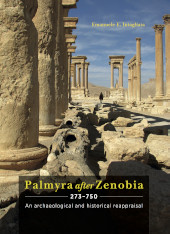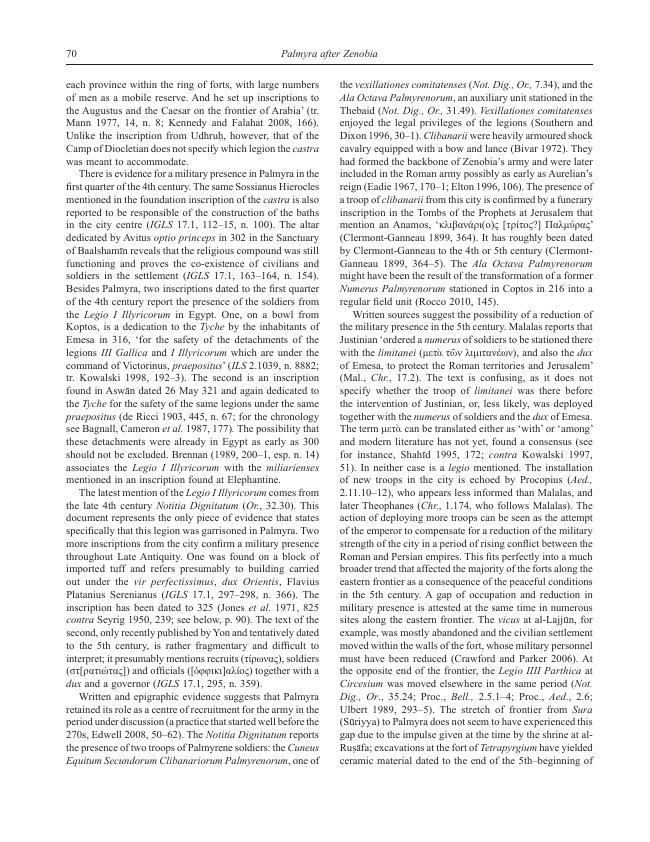Palmyra after Zenobia AD 273-750 : An Archaeological and Historical Reappraisal
272 p.
This book casts light on a much neglected phase of the UNESCO world heritage site of Palmyra, namely the period between the fall of the Palmyrene andlsquo;Empireandrsquo; (AD 272) and the end of the Umayyad dominion (AD 750). The goal of the book is to fill a substantial hole in modern scholarship - the late antique and early Islamic history of the city still has to be written. In late antiquity Palmyra remained a thriving provincial city whose existence was assured by its newly acquired role of stronghold along the eastern frontier. Palmyra maintained a prominent religious role as one of the earliest bisphoric see in central Syria and in early Islam as the political center of the powerful Banu Kalnb tribe. Post-Roman Palmyra, city and setting, provide the focus of this book. Analysis and publication of evidence for post-Roman housing enables a study of the cityandrsquo;s urban life, including the private residential buildings in the sanctuary of Baandrsquo;alshamin. A systematic survey is presented of the ar
chaeological and literary evidence for the religious life of the city in Late Antiquity and Early Islam. The cityandrsquo;s defenses provide another focus. After a discussion of the garrison quartered in Palmyra, Diocletianandrsquo;s military fortress and the city walls are investigated, with photographic and archaeological evidence used to discuss chronology and building techniques. The book concludes with a synthetic account of archaeological and written material, providing a comprehensive history of the settlement from its origins to the fall of Marwan II in 750 AD. [Publisher's text].
Special access authorizations may apply; please contact us for further information.
-
Informationen
ISBN: 9781785709456
THEMENBEREICHE



